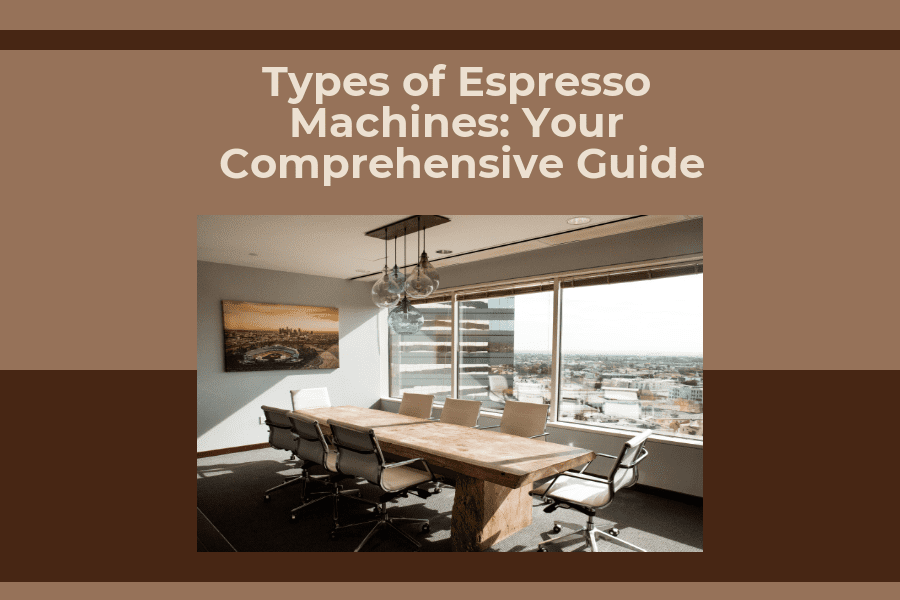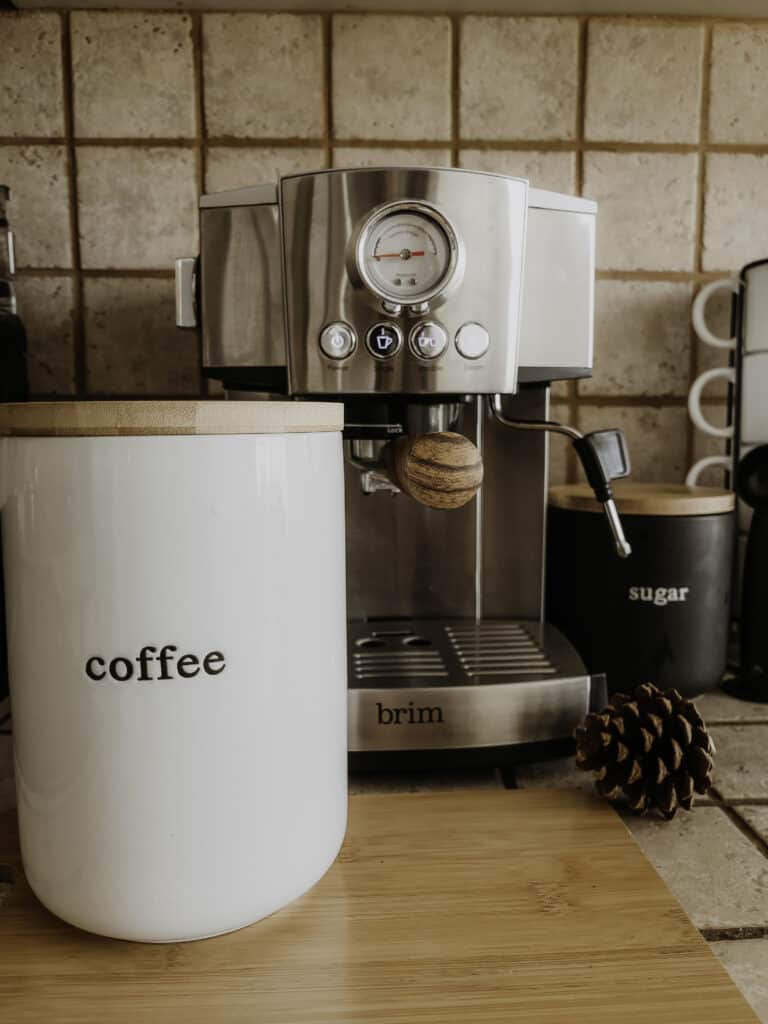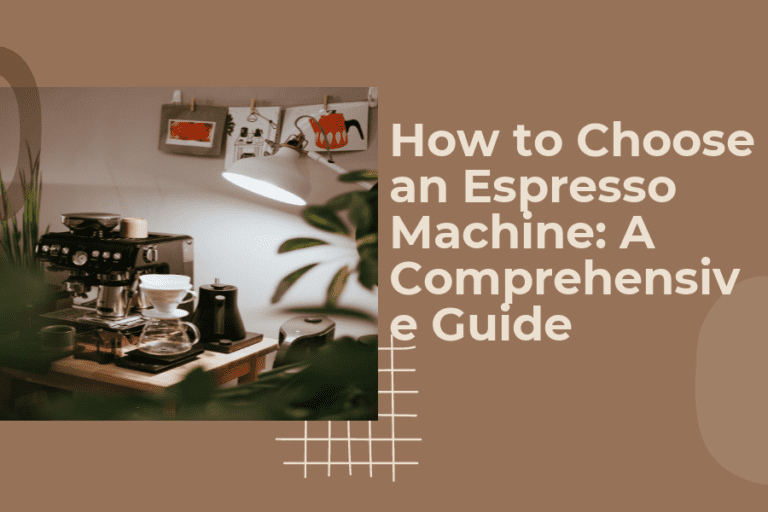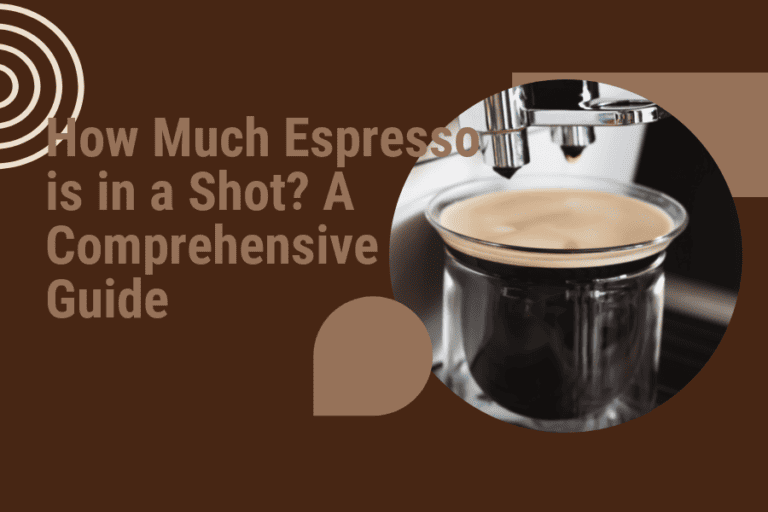Types of Espresso Machines: Your Comprehensive Guide

In recent years, espresso machines have become an integral part of our daily routine, allowing us to indulge in gourmet coffee beverages from the comfort of our homes. With a wide range of models and features, choosing the perfect espresso machine can seem overwhelming. In this article, we will explore the different types of espresso machines and help you decide which one is ideal for your needs and preferences.
We will dive into the world of manual, semi-automatic, fully-automatic, and super-automatic espresso machines. Each type offers unique advantages and serves a specific purpose, from the hands-on, traditional art of manual espresso making to the convenience of one-touch coffee brewing provided by super-automatic models. By understanding the mechanisms, features, and capabilities of these espresso machines, we will empower you to make an informed decision and enhance your home coffee experience.
As we examine the various espresso machines, we will highlight factors such as brewing process, ease of use, consistency, and customization options. Our goal is to help you find the right espresso machine that caters to your taste buds, lifestyle, and budget, without compromising on quality and performance. So, let us embark on this journey of discovery together and elevate your coffee game!

Types of Espresso Machines
There are various types of espresso machines available in the market, each offering a different level of convenience, control, and customization. Based on functionalities and designs, we will discuss four main types of espresso machines: Manual Lever, Semi-Automatic, Automatic, and Super-Automatic.
Manual Lever
Manual lever espresso machines are one of the most basic and traditional espresso-making devices in the market. Using these machines, we need to control the entire brewing process, including the water flow and pressure. Despite their simple design, manual lever machines can be quite challenging to use, especially for beginners. Experienced coffee enthusiasts who want to have full control over their espresso-making process often prefer these machines.
Semi-Automatic
Semi-automatic espresso machines offer more control over the brewing process while still providing some level of automation. These machines typically have an electric pump that maintains consistent water pressure during extraction. We have the freedom to customize the grind size, tamp pressure, and extraction time, making it a popular choice among espresso enthusiasts who want a balance between control and convenience.
Automatic
Automatic espresso machines, also known as fully automatic machines, are designed to provide more ease and convenience when brewing espresso. These machines automate the entire extraction process, including the water flow and pressure, which results in a consistent espresso shot with minimal effort. Automatic machines are suitable for those who prefer convenience and consistency above customization.
Super-Automatic
Super-automatic espresso machines offer the highest level of automation and convenience. They integrate coffee grinding, tamping, brewing, and even milk frothing into a seamless process. With just a touch of a button, we can prepare a variety of espresso drinks, including cappuccinos and lattes. Although these machines come with a higher price tag, they are perfect for those who want to enjoy a hassle-free espresso-making experience at home or in a busy commercial setting.
Boilers and Water Flow
In this section, we’ll discuss the types of boilers and water flow mechanisms in espresso machines. The main types of boilers found in espresso machines are single boiler, double boiler, and heat exchanging.
Single Boiler
Single boiler espresso machines use a single source of water for both extraction in the group head and steaming with the wand (source). This means that the water is heated in a single boiler for both functions. These machines are efficient and straightforward, making them suitable for home use or smaller establishments where only a few espresso-based drinks are prepared at a time. However, since there’s only one boiler, users must wait between brewing and steaming, as the boiler must cool down or heat up between functions. This can be an inconvenience in busy settings or when making multiple drinks quickly.
Double Boiler
Double boiler espresso machines have two separate boilers, one for brewing and the other for steaming. This design allows users to steam milk and extract espresso simultaneously, resulting in faster drink preparation times. The dual-boiler setup also provides more precise temperature control and stability during both processes. These machines are more suitable for high-volume settings, such as busy cafes or restaurants where speed and efficiency are crucial.
Heat Exchanging
Heat exchanging espresso machines feature a single boiler but incorporate a heat exchange mechanism, allowing for simultaneous brewing and steaming (source). This system uses a dedicated steam boiler that also heats the water for brewing through a separate, isolated tube. The water for brewing is heated to the correct temperature as it passes through the heat exchanger before reaching the group head for extraction. Heat exchanging machines offer a middle ground between single and double boiler machines, balancing efficiency and cost.
Understanding the differences between single boiler, double boiler, and heat exchanging espresso machines can help identify the most suitable option for specific needs and settings. In addition, factors such as water flow, pressure gauge, and water tank capacity are also essential to consider when choosing the ideal espresso machine to match the volume and demands of a particular environment.

Features and Components
Portafilter
One of the essential components of an espresso machine is the portafilter. This is where the coffee grounds are placed before being tightly packed in preparation for brewing. Portafilters come in different sizes, but most common are the single and double shot options. The choice of portafilter size affects the amount of ground coffee and ultimately the strength and flavor of the resulting espresso shot.
Steam Wand
The steam wand is another important feature of an espresso machine. It works by forcing hot steam through its tip, which then heats and froths milk for beverages like cappuccinos and lattes. The mastery of using a steam wand is essential for achieving that perfect microfoam texture, which can make or break your milk-based coffee drinks.
Built-In Grinder
Some espresso machines come with a built-in grinder, providing convenience and consistency in grinding coffee beans. A high-quality grinder is essential for achieving optimal extraction and flavor in your espresso shots. Having a built-in grinder allows for more control over the grind size, which can significantly impact the taste of your espresso.
Tamper
The tamper is a small, usually metal tool used to press and compact coffee grounds into the portafilter evenly. Proper tamping ensures that the water flows through the coffee grounds at the right speed, resulting in a well-extracted and delicious shot of espresso. It is crucial to apply consistent pressure when using the tamper to achieve a uniform espresso puck.
PID
A PID, or Proportional-Integral-Derivative controller, is a feature found in some high-end espresso machines. It electronically controls the water temperature, ensuring it remains stable and consistent throughout the brewing process. Maintaining an accurate temperature is crucial for optimal extraction and can significantly improve the taste and quality of your espresso.
Pressure Gauge
Many espresso machines feature a pressure gauge that allows you to monitor the pressure during the brewing process. This is an essential tool for making adjustments and fine-tuning the extraction process. Ideal pressure levels are typically around 9 bars, but variations can occur depending on the coffee beans and personal preferences.
Drip Tray
Lastly, most espresso machines come with a drip tray that collects any water or coffee that may spill during the brewing process. This ensures a cleaner and tidier workspace, making the process of brewing espresso more enjoyable and efficient. Drip trays are usually removable for easy cleaning and maintenance.
Top Brands and Models
In our pursuit of the perfect espresso, we have come across several top brands and models that consistently deliver quality and are highly recommended by users in the world of espresso machines. Allow us to introduce you to the following:
- Breville
- Gaggia
- Diletta Mio
- Breville Barista Express
Breville is known for its top-quality espresso machines, and one of their standout models is the Breville Bambino Plus. This compact machine offers a quick heat-up time with precise temperature control, making it an excellent choice for espresso enthusiasts who value both style and functionality.
Moving on to Gaggia, another highly respected brand in the espresso world. The Gaggia Classic Pro is a top pick for coffee geeks, thanks to its professional-grade features, such as the commercial-style steam wand and the ability to easily fine-tune your shot for a customized espresso experience.
The Diletta Mio is a lesser-known yet reliable brand in the espresso machine space, offering a range of machines suitable for both beginners and advanced users. Its espresso machines are known for their sleek design and user-friendly features, making them an attractive option for home baristas. Unfortunately, it’s not easy to find online sources discussing Diletta Mio but if you come across it, give it a try.
Finally, we want to highlight the Breville Barista Express, a popular choice for those who want an all-in-one espresso machine. With built-in conical burr grinder, PID temperature control, and precise pressure gauge, this machine allows you to create cafe-quality espresso from the comfort of your own kitchen.
Beverage Options
Espresso machines offer a variety of beverage options, allowing us to enjoy different types of coffee drinks. Some of the most popular beverages include cappuccinos, lattes, and americanos. To create these drinks, espresso machines often come with additional features like milk frothers and hot water dispensers to cater to various preferences.
Cappuccinos are a favorite among coffee enthusiasts, consisting of equal parts espresso, steamed milk, and milk foam. Most espresso machines come with a milk frother, enabling us to create the creamy and velvety texture of steamed milk required for a perfect cappuccino.
Lattes, on the other hand, are similar to cappuccinos but have a higher milk-to-espresso ratio. This creates a smoother and creamier drink, perfect for those who prefer a milder coffee flavor. The milk frother found in many espresso machines is essential for preparing lattes, as it helps us achieve the desired consistency and temperature of the milk.
For those who enjoy a more robust coffee taste, the Americano is a great option. This beverage is made by adding hot water to a shot of espresso, resulting in a drink with the intensity of espresso but a more diluted and approachable taste. Some espresso machines come with a hot water dispenser, making it easy for us to prepare americanos effortlessly.
In conclusion, investing in an espresso machine provides versatile beverage options to match our desired coffee experience. From cappuccinos and lattes to americanos, the additional features of milk frothers and hot water dispensers enable us to create a range of delicious coffee drinks with ease.
Choosing the Right Espresso Machine
When deciding on the perfect espresso machine, it’s essential to consider your needs and preferences. In this section, we’ll discuss different types of espresso machines, including home espresso machines, volumetric espresso machines, and stovetop espresso machines, to help you make an informed decision.
Home Espresso Machines
Home espresso machines cater to the needs of espresso lovers who want to enjoy quality espresso at the comfort of their home. There are various types of home espresso machines, including semi-automatic, super-automatic, and ultra-automatic models.
Semi-automatic espresso machines offer a balance of control and convenience. You’ll have to manually grind your coffee beans, but the machine handles the brewing process. On the other hand, super-automatic espresso machines come with built-in grinders and automatic milk frothers, making the entire process hassle-free. Ultra-automatic espresso machines are similar to super-automatic machines but come equipped with more advanced features like customizable brewing settings and integrated milk carafes.
Volumetric Espresso Machines
Volumetric espresso machines, also known as pump-driven machines, use an electric pump to push water through the coffee grounds. This type of machine provides a consistent brewing pressure, resulting in a rich and flavorful espresso. Some volumetric machines are manual, featuring levers for controlling the brewing process, while others are automatic and come with programmable settings for different brewing volumes.
Single boiler espresso machines have one boiler for both brewing espresso and steaming milk, while double boiler espresso machines separate these functions, allowing for better temperature control and simultaneous brewing and steaming. Double boiler machines are ideal for espresso enthusiasts who value precision while making their coffee.
Stovetop Espresso Machines
Stovetop espresso machines, also known as Moka pots, are a traditional and affordable way of brewing espresso. These machines work on stovetops and do not require electricity. The lower chamber holds water, while the upper chamber holds the brewed espresso. As the water heats, pressure builds up, forcing it through the coffee grounds and into the upper chamber.
While stovetop espresso machines might not produce the same quality of espresso as pump-driven or volumetric machines, they are a budget-friendly option for those who wish to enjoy espresso without investing in an expensive machine.
When choosing your ideal espresso machine, consider factors like convenience, control, and price. Assess your needs and preferences to ensure that you select a machine that satisfies your espresso cravings and suits your lifestyle.
Tips for Brewing Great Espresso
Choosing the right coffee beans is essential for a perfect espresso. We recommend buying coffee as fresh as possible and using freshly ground beans. Opt for an “espresso blend” or choose a “Full City Roast” or “Vienna Roast” for the best results. Also, remember to maintain your espresso machine’s water at a temperature between 195 °F and 205 °F (90 °C – 96 °C) while brewing the shot, as stated by Coffee Affection.
Now, let’s talk about the coffee-to-water ratio. Wirecutter suggests using a 1:2 brew ratio, as it allows for the correct amount of water to pass through the ground coffee, creating a delicious and balanced espresso shot. Practicing this will improve the quality of your espresso and make it easier to replicate every time.
Using quality accessories can impact your espresso as well. For example, better portafilter baskets can result in a more consistent and flavorful espresso. Investing in a high-quality metal portafilter basket with fine holes on the bottom, as Serious Eats mentions, can significantly improve your espresso machine’s output.
Once you’ve mastered espresso shots, you can incorporate them into other coffee drinks. For instance, try mixing steamed milk and a shot of espresso to make a creamy latte. Lattes offer a delightful balance between the boldness of espresso and the smoothness of milk.
RECOMMENDED READS
Top Rated Espresso Machines: Your Guide to the Best Options
Types of Espresso Makers: Your Ultimate Guide
The Ultimate Guide To Cleaning And Maintaining Your Espresso Machine





